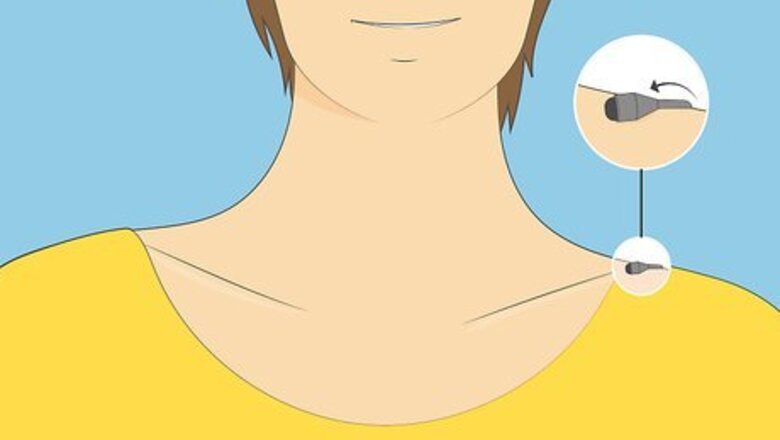
views
Place the lapel mic under the inseam of a subject’s shirt.

Use this as your go-to anytime your subject has something like a thick T-shirt. Run the mic’s cord up the subject’s back, inside their shirt. Tape the mic to the inseam of the person’s shirt right next to their collarbone using gaffer’s tape. Taping the mic near the collarbone helps it pick up good audio because the subject’s clothing doesn’t move much at that location, so there shouldn’t be too much rustling over the mic. This makes it one of the most universally used hiding spots.
Hide the lapel mic under a shirt collar.
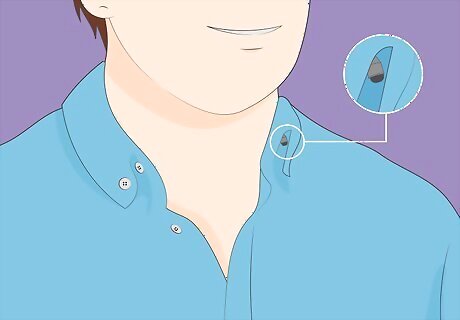
This is an effective method when the subject is wearing a collared shirt. Place the receiver on the subject’s back and run the cord up along the outside of their shirt’s back. Feed the mic under their collar and tape it just under the fold at one end of the collar. Note that the mic’s cord will be visible from behind. However, you can fix this by having the subject wear a blazer or suit jacket to cover it.
Poke a lavalier mic up through a buttonhole on a shirt.

Pick this hiding spot when your subject is wearing a dark-colored, buttoned shirt. Run the cable up inside the front of the person’s shirt and tape the wire to the inside of the shirt. Feed the mic straight up through a buttonhole near the top of the shirt. To hide the mic even more, tuck it underneath the flap between 2 buttonholes. Wrap a piece of moleskin tape around the mic to reduce rustling sounds from the fabric moving on top of it.
Conceal a lapel mic in a tie.
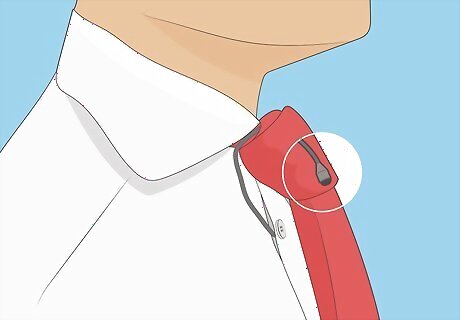
Ties offer a couple of different hiding spots for lapel mics. Clip the mic to the back of a tie with the built-in clip for an easy solution. Or, loosen the tie knot and feed the mic down through it until it’s just barely hanging out from the bottom of the knit, behind the tie.
Tape the mic directly to someone’s chest.
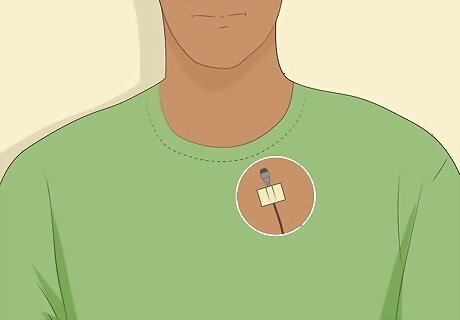
Choose this method when your subject is wearing a thin T-shirt or top. Feed the mic cord up through the front of the person’s shirt. Tape the mic to their chest just below the collar of their shirt. This hiding spot often leads to recording more bass notes from the individual’s voice, so it can also be a good choice when you're looking for that kind of an effect.
Put the mic behind an individual’s ear.
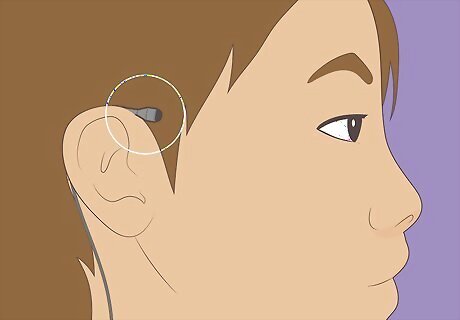
Use this technique when someone has a deep-collared shirt or no shirt at all. Feed the mic’s wire up from the person’s back. Tape the wire to the center of the base of their neck. Tuck the mic behind the very top of their ear and tape the cord to the back of their ear. Keep in mind that the mic wire is visible from certain angles with this method, so be aware of your camera placements to avoid capturing it on film.
Run the mic along the brim or bill of a hat.

This works well when your subject is wearing a hat with a dark brim or bill. Run the mic wire up the back of the individual. Tape the mic discreetly under the bill of their baseball cap or along the brim of their fedora-style hat. Note that this doesn’t work well for flimsy hats, such as those made from straw or mesh.
Disguise a lapel mic in someone’s hair.
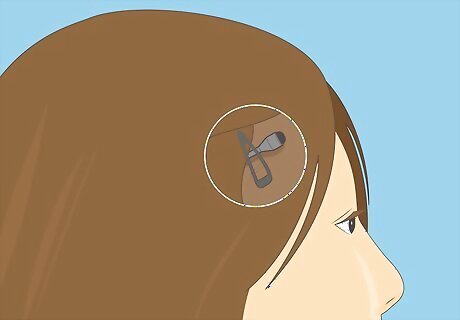
You can use this technique when your subject has long, voluminous hair. Thread the mic up through their hair from behind until it’s just behind their hairline at the edge of their forehead. Secure the mic and wire in place with bobby pins or barrettes. Note that this works better for smaller mics that are easier to disguise inside the hair. Darker hair is a plus, too.
Hide the mic in a woman subject’s cleavage.
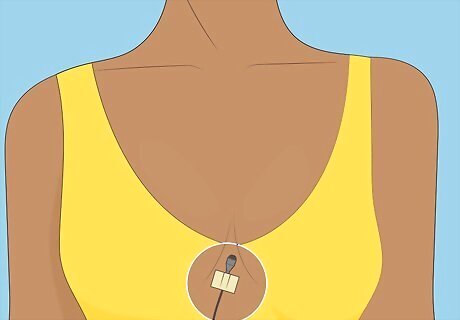
This works well when a female is wearing a low-cut dress or gown. Explain to them how to route the cable from the receiver up underneath their dress and where to place the mic, just out of sight in their cleavage. Ask them to secure the mic with clear medical tape in the dressing room. Be very conscious of privacy and comfort issues if you use this method, especially if you’re a male. Female costume designers and set workers may be able to help set up a female subject with a mic this way, as long as they’re okay with it.
Take advantage of accessories to hide lapel mics.
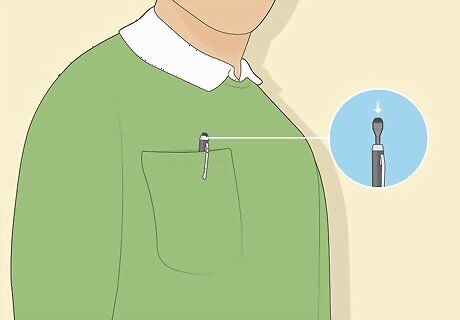
Stage props and accessories offer creative solutions for hiding mics. For instance, remove the inside parts from a pen and feed a lapel mic through it. Make a small hole inside the front pocket of an actor’s shirt, set the pen in their pocket with the mic aimed upwards, and run the cable down through the hole. Another idea is to build mics into accessories like canes and walking sticks.




















Comments
0 comment